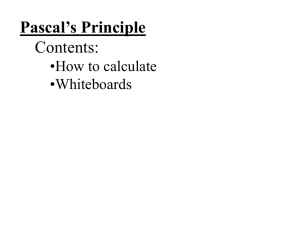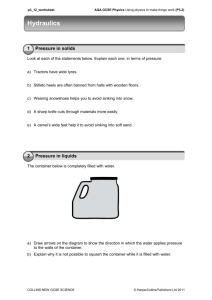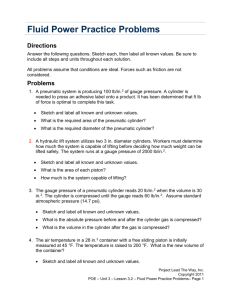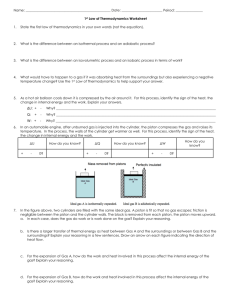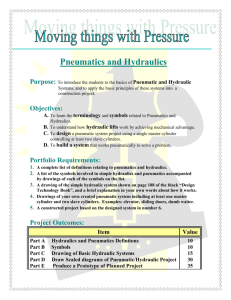Hydraulic Pumps and Cylinders
advertisement
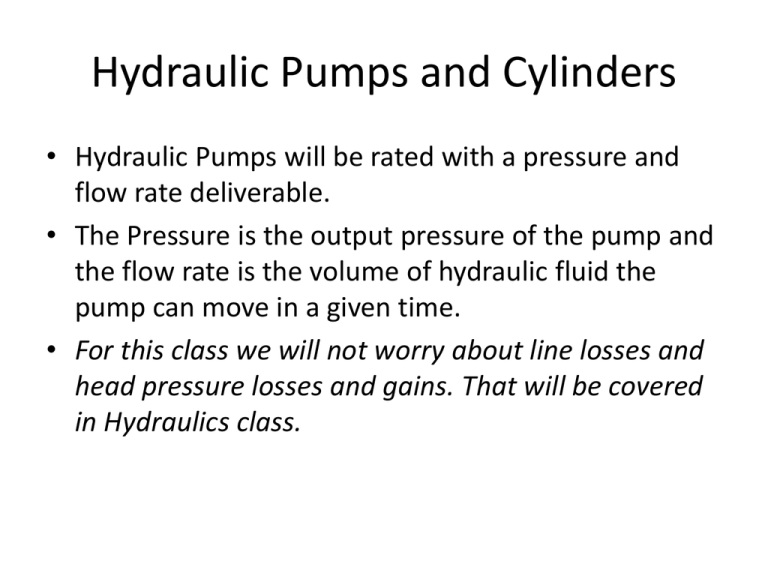
Hydraulic Pumps and Cylinders • Hydraulic Pumps will be rated with a pressure and flow rate deliverable. • The Pressure is the output pressure of the pump and the flow rate is the volume of hydraulic fluid the pump can move in a given time. • For this class we will not worry about line losses and head pressure losses and gains. That will be covered in Hydraulics class. Hydraulic Cylinders • Hydraulic cylinders will have a piston diameter (sometimes just called the cylinder diameter) and a total length it can be extended to. • The force the cylinder can exert is dependant on the fluid pressure supplied to the cylinder and the cross-sectional area of the piston – F = P*A • The Speed at which the cylinder is traveling is dependant on the cross-sectional area of the piston and the volumetric flow from the pump – Speed = Volumetric flow / A Pascal’s Law • A fluid at rest creates an equal pressure in all directions at any one point • To add to this, the pressure is only dependant on the density (ρ) or specific weight (γ) of the liquid and the depth of the liquid (h) at that point – P = ρgh – P = γh γ = specific weight = ρ * g Density and Specific Weight of Water • For Water, – Density • 1000 kg/m3 • 1.938 slug/ft3 – Specific Weight • 9810 N/m3 • 62.4 lb/ft3 Pressure on a Submerged Surface • Calculate the equivalent force on each wall and the bottom of a one foot long section of the trench shown filled with 6 feet of water 6 ft 2 ft Example 1: Determine the magnitude of the hydrostatic force acting per meter length of the wall. Water has a density of 1 Mg/m^3) Example 2 – Determine the magnitude of the hydrostatic force acting on gate AB, which has a width of 2 ft. The specific weight of water is 62.4 lb/ft^3)
